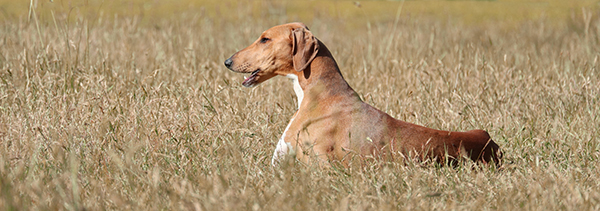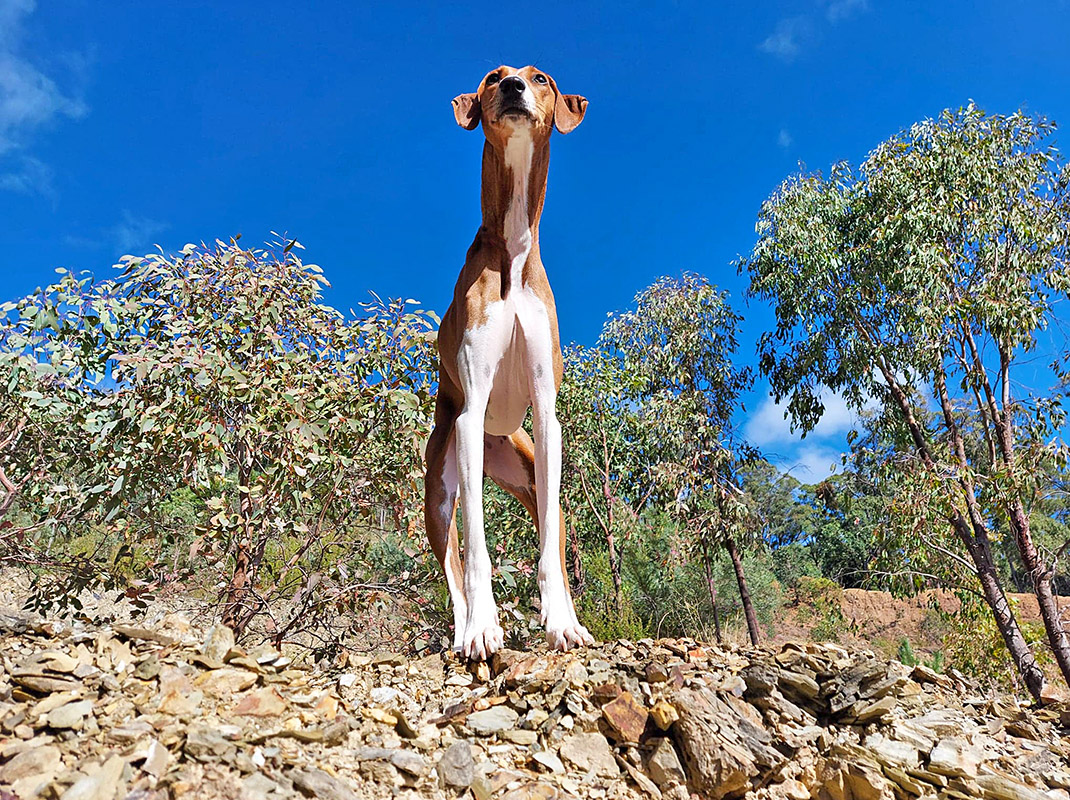
Due to the ongoing unrest in West Africa, the future of the Azawakh in its homeland is uncertain. As a result, the preservation of this ancient breed in its original form may depend upon the small number of dedicated breeders living in more fortunate parts of the world.
Preserving the Azawakh is not as simple as ensuring descendants continue to reproduce. There are two crucial factors which must remain in the forefront of breeders’ minds.
Authenticity
The Azawakh we breed must remain true to their Sahelian origins. We must not allow our breeding decisions to be swayed by the ever-shifting fancies of the show-ring or pet fashion trends, as so many other dog breeds have done.
Today, some dog breeds are unrecognisable compared to their original forms – and some might argue, as many were entirely ‘man-made’ in the first place, what is wrong with continuing to modify them to suit our desires? Fair enough. But this is not the case with Azawakh. They were not exclusively selected and moulded by people … they are one of the closest to naturally evolved of all domesticated dogs. They are what is termed a landrace, and are too unique in their current form for it to be lost.

Conservation biologists operating captive breeding programs to preserve endangered species make breeding decisions based upon fitness and function. These are the very criteria which have influenced Azawakh breeding in the Sahel for millienia. It is crucial we keep this in mind: as one breeder once told me, ‘we should look at each new generation and ask ourselves: ‘could this dog survive in the Sahel?’ This is a simple but sure formula for future breeding. We need only look through the incredible photographs taken of Azawakh in West Africa over the last 30-40 years to see what exquisite dogs they are in their original state – there is no needed to ‘improve’ on Mother Nature’s perfection!
Genetic Health
The weak do not survive in the Sahel, hence Azawakh do not suffer the host of hereditary disorders which plague so many dog breeds today. But now our dogs live in the lap of luxury, and the fierce culling of litters which takes place in Africa is not practiced; it is crucial breeders are vigilant in ensuring heritable diseases do not creep into the breed over time.
The best defence against this is maintaining high levels of genetic diversity (heterozygosity) within the breed. This is achieved by ensuring pairs chosen for mating are not closely related. Obviously, the most accurate way of doing this would be to obtain a complete DNA profile of each available bitch/dog before making breeding decisions. However, often this is not practical, thus most breeders rely upon calculating the coefficient of inbreeding (COI) by using computer databases to compare the bitch’s and dog’s pedigrees back over as many generations as possible and quantify the number of unique versus shared ancestors. The resulting COI is given as a percentage, and the lower the number, the less related the dogs.

Of course, there are no pedigree papers in the Sahel, thus computer databases automatically assume Azawakh imported from Africa are wholly unrelated to one another. Extensive genetic studies would be required to determine the accuracy of this assumption. Mind you, as Azawakh have been imported from multiple locations right across the Sahelian zones of Mali, Burkina Faso and Niger, it is unlikely these individuals would be as closely related as most of the Azawakh bred so far in the rest of the world. Hence, we owe much to the courageous breeders who have continued to carefully incorporate new Azawakh into the existing European bloodlines, and hopefully, in time other registries will allow breeders elsewhere to do the same.

